Is Dry Needling Effective When Combined with Other Therapies for Myofascial Trigger Points Associated with Neck Pain Symptoms? A Systematic Review and Meta-Analysis
- PMID: 33603940
- PMCID: PMC7872772
- DOI: 10.1155/2021/8836427
Is Dry Needling Effective When Combined with Other Therapies for Myofascial Trigger Points Associated with Neck Pain Symptoms? A Systematic Review and Meta-Analysis
Abstract
Objective: To evaluate the effects of combining dry needling with other physical therapy interventions versus the application of the other interventions or dry needling alone applied over trigger points (TrPs) associated to neck pain. Databases and Data Treatment. Electronic databases were searched for randomized controlled trials where at least one group received dry needling combined with other interventions for TrPs associated with neck pain. Outcomes included pain intensity, pain-related disability, pressure pain thresholds, and cervical range of motion. The risk of bias (RoB) was assessed using the Cochrane risk of bias tool, methodological quality was assessed with PEDro score, and the quality of evidence was assessed by using the GRADE approach. Between-groups mean differences (MD) and standardized mean difference (SMD) were calculated.
Results: Eight trials were included. Dry needling combined with other interventions reduced pain intensity at short-term (SMD -1.46, 95% CI -2.25 to -0.67) and midterm (SMD -0.38, 95% CI -0.74 to -0.03) but not immediately after or at long-term compared with the other interventions alone. A small effect on pain-related disability was observed at short-term (SMD -0.45, 95% CI -0.87 to -0.03) but not at midterm or long-term. The inclusion of dry needling was also effective for improving pressure pain thresholds only at short-term (MD 112.02 kPa, 95% CI 27.99 to 196.06). No significant effects on cervical range of motion or pain catastrophism were observed.
Conclusion: Low-to-moderate evidence suggests a positive effect to the combination of dry needling with other interventions for improving pain intensity, pain-related disability, pressure pain thresholds, and cervical range of motion in people with neck pain associated with TrPs at short-term. No midterm or long-term effects were observed.
Copyright © 2021 César Fernández-De-Las-Peñas et al.
Conflict of interest statement
The authors declare that they have no conflicts of interest.
Figures
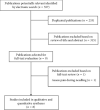
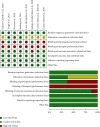
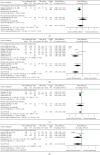
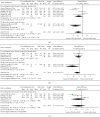
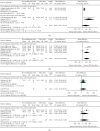
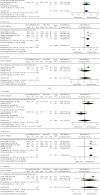
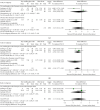
Similar articles
-
Effectiveness of Dry Needling for Myofascial Trigger Points Associated with Neck Pain Symptoms: An Updated Systematic Review and Meta-Analysis.J Clin Med. 2020 Oct 14;9(10):3300. doi: 10.3390/jcm9103300. J Clin Med. 2020. PMID: 33066556 Free PMC article. Review.
-
Dry Needling Versus Trigger Point Injection for Neck Pain Symptoms Associated with Myofascial Trigger Points: A Systematic Review and Meta-Analysis.Pain Med. 2022 Mar 2;23(3):515-525. doi: 10.1093/pm/pnab188. Pain Med. 2022. PMID: 34114639
-
The importance of the local twitch response during needling interventions in spinal pain associated with myofascial trigger points: a systematic review and meta-analysis.Acupunct Med. 2022 Aug;40(4):299-311. doi: 10.1177/09645284211056346. Epub 2021 Dec 13. Acupunct Med. 2022. PMID: 34894759
-
Is Dry Needling Effective for the Management of Plantar Heel Pain or Plantar Fasciitis? An Updated Systematic Review and Meta-Analysis.Pain Med. 2021 Jul 25;22(7):1630-1641. doi: 10.1093/pm/pnab114. Pain Med. 2021. PMID: 33760098
-
The effect of upper trapezius trigger points dry needling on postural control in patients with chronic neck pain.J Bodyw Mov Ther. 2024 Oct;40:1079-1085. doi: 10.1016/j.jbmt.2024.07.015. Epub 2024 Jul 15. J Bodyw Mov Ther. 2024. PMID: 39593415 Clinical Trial.
Cited by
-
Combination of Manual Therapy and Dry Needling Effectively Improves Acute Neck Pain and Muscular Tone and Stiffness in Combat Sports Athletes: A Randomized Controlled Study.J Sports Sci Med. 2024 Dec 1;23(4):852-862. doi: 10.52082/jssm.2024.852. eCollection 2024 Dec. J Sports Sci Med. 2024. PMID: 39649564 Free PMC article. Clinical Trial.
-
Electromyographic Activity of Cervical Muscles in Patients with Neck Pain and Changes After Dry Needling: A Narrative Review.J Clin Med. 2024 Nov 30;13(23):7288. doi: 10.3390/jcm13237288. J Clin Med. 2024. PMID: 39685746 Free PMC article. Review.
-
Research Trends in Dry Needling for Neck Pain Treatment: A Bibliometric Analysis.J Chiropr Humanit. 2024 Oct 1;31:33-47. doi: 10.1016/j.echu.2024.02.002. eCollection 2024 Dec. J Chiropr Humanit. 2024. PMID: 39403608 Free PMC article. Review.
-
Dry Needling Alone or in Combination with Exercise Therapy versus Other Interventions for Reducing Pain and Disability in Subacromial Pain Syndrome: A Systematic Review and Meta-Analysis.Int J Environ Res Public Health. 2022 Sep 2;19(17):10961. doi: 10.3390/ijerph191710961. Int J Environ Res Public Health. 2022. PMID: 36078676 Free PMC article.
-
Effectiveness of Dry Needling in Improving Pain and Function in Comparison with Other Techniques in Patients with Chronic Neck Pain: A Systematic Review and Meta-Analysis.Pain Res Manag. 2023 Aug 23;2023:1523834. doi: 10.1155/2023/1523834. eCollection 2023. Pain Res Manag. 2023. PMID: 37664417 Free PMC article.
References
-
- Gross A., Kay T. M., Paquin J., et al. Exercises for mechanical neck disorders. Cochrane Database Systematic Review. 2015;8 - PubMed
Publication types
MeSH terms
LinkOut - more resources
Full Text Sources
Other Literature Sources
Medical

